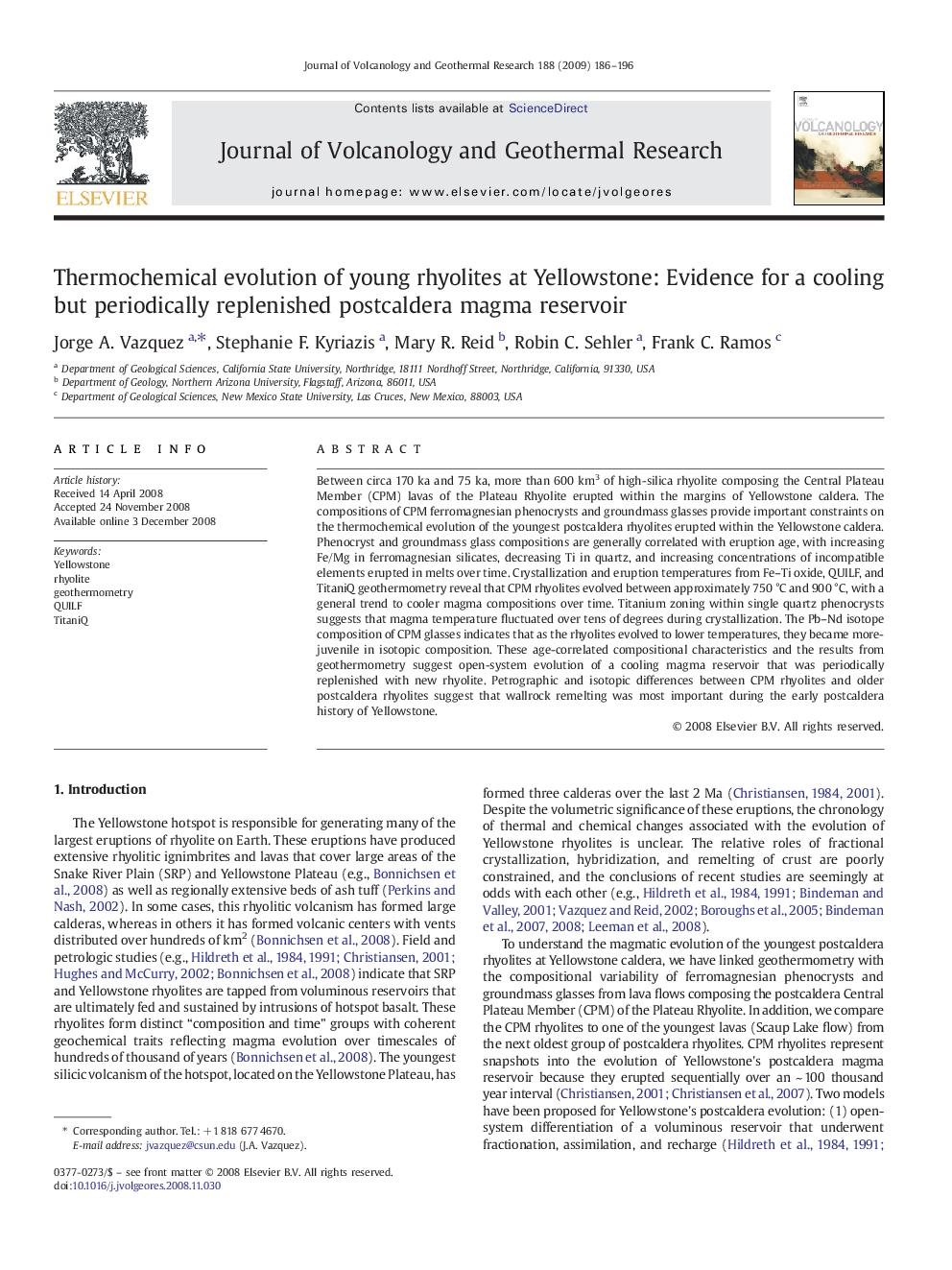| Article ID | Journal | Published Year | Pages | File Type |
|---|---|---|---|---|
| 4713179 | Journal of Volcanology and Geothermal Research | 2009 | 11 Pages |
Between circa 170 ka and 75 ka, more than 600 km3 of high-silica rhyolite composing the Central Plateau Member (CPM) lavas of the Plateau Rhyolite erupted within the margins of Yellowstone caldera. The compositions of CPM ferromagnesian phenocrysts and groundmass glasses provide important constraints on the thermochemical evolution of the youngest postcaldera rhyolites erupted within the Yellowstone caldera. Phenocryst and groundmass glass compositions are generally correlated with eruption age, with increasing Fe/Mg in ferromagnesian silicates, decreasing Ti in quartz, and increasing concentrations of incompatible elements erupted in melts over time. Crystallization and eruption temperatures from Fe–Ti oxide, QUILF, and TitaniQ geothermometry reveal that CPM rhyolites evolved between approximately 750 °C and 900 °C, with a general trend to cooler magma compositions over time. Titanium zoning within single quartz phenocrysts suggests that magma temperature fluctuated over tens of degrees during crystallization. The Pb–Nd isotope composition of CPM glasses indicates that as the rhyolites evolved to lower temperatures, they became more-juvenile in isotopic composition. These age-correlated compositional characteristics and the results from geothermometry suggest open-system evolution of a cooling magma reservoir that was periodically replenished with new rhyolite. Petrographic and isotopic differences between CPM rhyolites and older postcaldera rhyolites suggest that wallrock remelting was most important during the early postcaldera history of Yellowstone.
